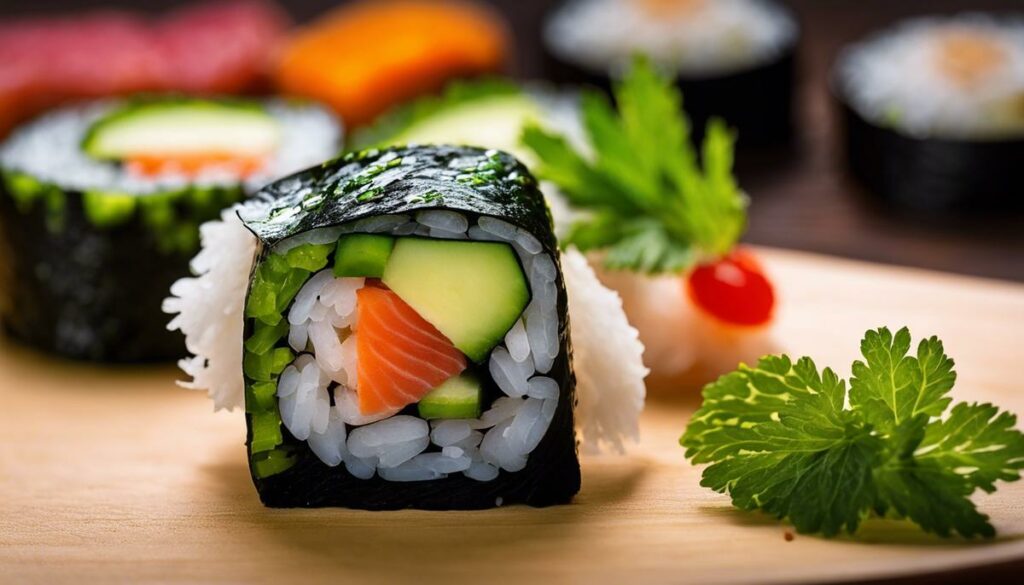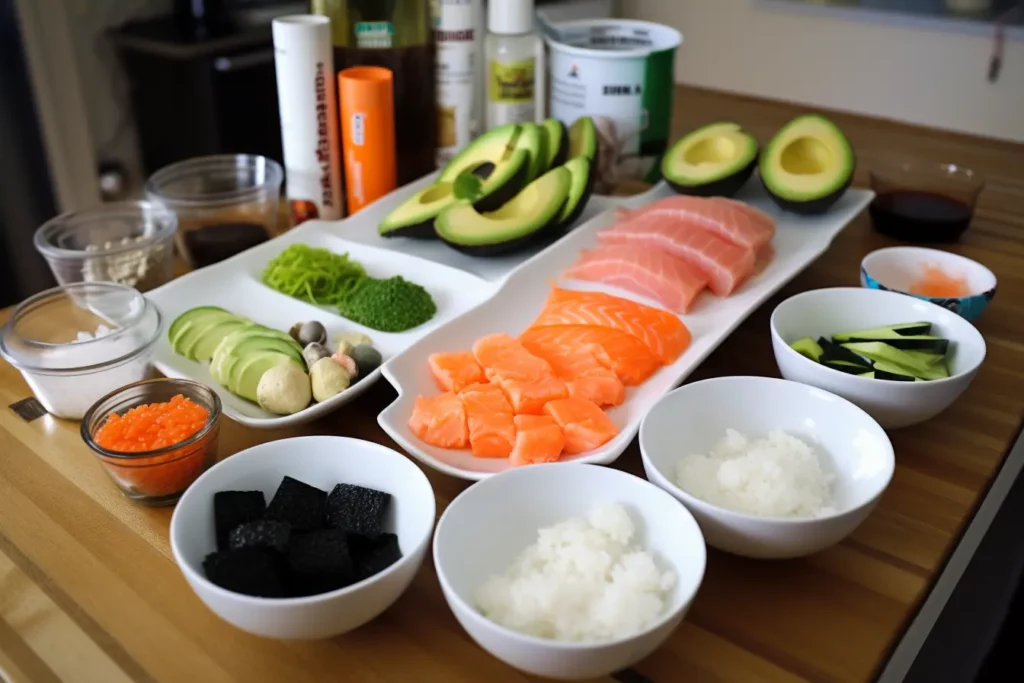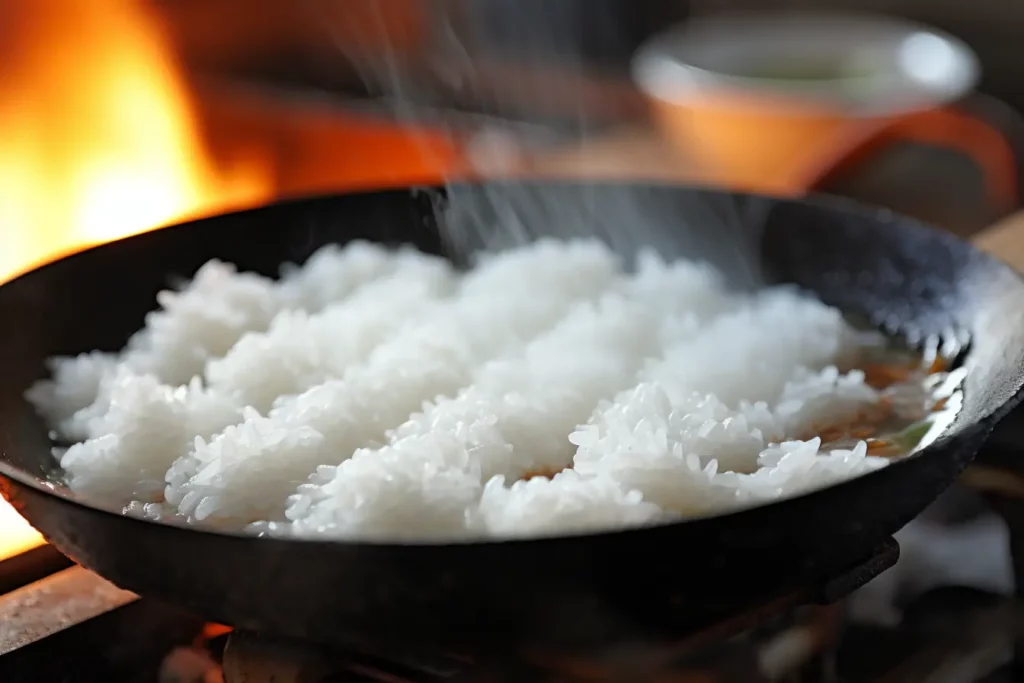In the vast and diverse world of sushi culture, the role of seaweed occupies a position that is as subtle as it is decisive. Algae, also known as “the green gold of the sea”, is the invisible backbone that gives the art and craft of sushi its vitality and character. In this article, we’ll go on an in-depth journey to discover the history, art, and science of seaweed in sushi culture. We will explore their indispensable contribution to sushi cuisine, from the historical relationship between seaweed and sushi, to the traditional farming methods and their influence on the quality and taste of seaweed, to the use of seaweed in the impressive designs of the sushi masters.
History of seaweed in sushi culture
Sushi is a fascinating example of traditional Japanese food that has changed dramatically over the years. Seaweed, a fundamental element in this particular culinary creation, has played a significant role in the growth of sushi culture.
Traditionally, seaweed called “nori” was used in sushi production mainly to wrap the rice blocks. Thanks to their nutritious elements and unique taste, they have become an indispensable part of sushi. Once upon a time, they were picked up from the coasts and dried to be used in the kitchen.
With modernity came change. Nowadays, seaweed is grown in controlled hydraulic engineering facilities to meet the needs of the growing sushi culture worldwide. The use of seaweed has also diversified, from starring roles in sushi rolls to accompaniments in soups and salads.
In addition, the aesthetics of sushi presentation have greatly increased due to the use of seaweed. Colour variations from green to black give the panels a visual depth. Given the importance of appearance in the current age of social sharing, sushi culture benefits greatly from the visual appeal of seaweed.
Recent developments have expanded seaweed culture within the sushi world even further. Nori, for example, is now toasted and used in the form of sprinkles to add a crunchy texture. In addition, seaweed now offers a wide range of flavor profiles, from sweet to umami, that appeal to discerning palates.
Over the past few decades, the use of seaweed in sushi culture has evolved in a way that rewrites the culinary arts. From humble beginnings as a pure wrapping medium, it has developed into a central player in this culinary dance. It remains to be seen what further opportunities the future holds, but one thing is for sure – the role of seaweed in sushi culture will continue to inspire and delight.

Seaweed quality and its impact on the sushi experience
When discussing sushi, its quality and taste is undisputed. The pleasure begins as soon as you enter the restaurant and the smell of fresh fish and carefully selected spices wafts towards you. However, there is one element in sushi that can easily be overlooked, wrongly, but is unmistakable to its role in the sushi experience – the seaweed.
The quality of the algae is particularly important. Good sushi requires high-quality seaweed and it’s impossible to ignore this need. Poor quality seaweed can affect the overall flavor of the sushi and reduce the comfort of the food. After all, sushi enjoyment is determined by the harmonious interplay of ingredients.
The imaginative variations of sushi illustrate how central algae has become in sushi. Be it as a topping or in the form of relaxed, crispy chips as a snack, seaweed has its undisputed place in the sushi world. But what exactly does high seaweed quality in sushi do?
First, the mouth-feeling experience is enhanced. High-quality seaweed provides a satisfying crunch and clean break when you bite into your sushi. With poor quality, the mouthfeel is often chewy and rubbery, which can harm the overall dining experience.
Secondly, the quality of the seaweed plays an essential role in the development of the taste and aroma of the sushi. Premium seaweed has a subtle yet distinct umami flavor that greatly enhances the overall flavor of the sushi.
Have you ever noticed that seaweed in good sushi is often contrasting in color? A higher quality of algae usually results in a darker, almost black color, which visually provides a nice contrast to the color of the white rice. Visually attractive dishes not only make your mouth water, they also enhance the overall experience and pleasure of eating.
So good sushi is not only a question of the right fish or excellent travel, but also of seaweed. On your next sushi trip, pay attention to the small details and let yourself be convinced by the quality of the seaweed. That could take your entire sushi experience to a whole new level.
The importance of high-quality seaweed for the ultimate sushi experience cannot be underestimated. They’re not just an ingredient, they’re a crucial aspect in sushi aesthetics and sensibility, which strives for so much more than mere taste. So, the next time you’re enjoying sushi, remember: it’s the seaweed that makes the difference.
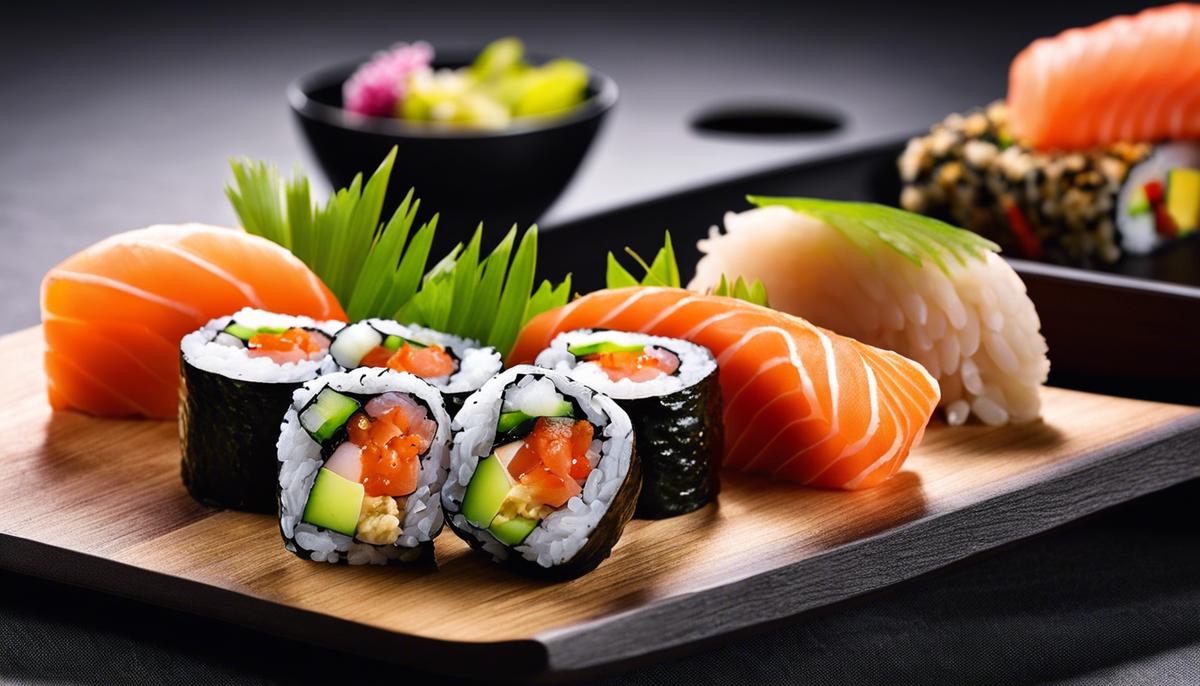
The Art of Using Seaweed in Sushi Design
The choice of seaweed in sushi is hugely important. She can choose between an average and an excellent sushi dish. How? By the quality. High-quality seaweed increases the overall value of sushi and can affect its texture and taste. With fresh, crunchy seaweed, every bite is a delight. The seaweed is often the unsung hero of sushi, it adds depth and complexity to this particular work of art that we all know and love.
Next, let’s talk about taste. In the context of sushi, they play a major role in the taste experience. The seaweed gives sushi a touch of the sea, an unmistakable aroma that reminds us of the beauty and mystery of the oceans. The seaweed transports us to the beach, providing an oceanic flavor that is subtle but an indispensable contribution.
Does sushi seem particularly beautiful to you? If so, then you’ve probably noticed the visual appeal of algae. Its sparkling black, contrasting with the delicate white of sushi rice, is a work of art for the eyes and adds a special touch to the presentation. The colour of the seaweed is a central element for the aesthetic grace of sushi and make the dish a real eye-catcher on every plate.
All in all, the seaweed is essential aspects of sushi aesthetics. Without them, sushi wouldn’t be what it is today. They add color and dimension to sushi, they visually embellish the sushi and are an important part of the sushi experience. They subtly contribute to making sushi dinners very special.
Has seaweed become interesting in sushi? Have you suddenly become hungry for sushi? The seductive functions of seaweed are undeniable. Although they are often overlooked, they are the silent heroes of sushi, creating atmospheric atmosphere and enriching your meal. Thank you, algae!
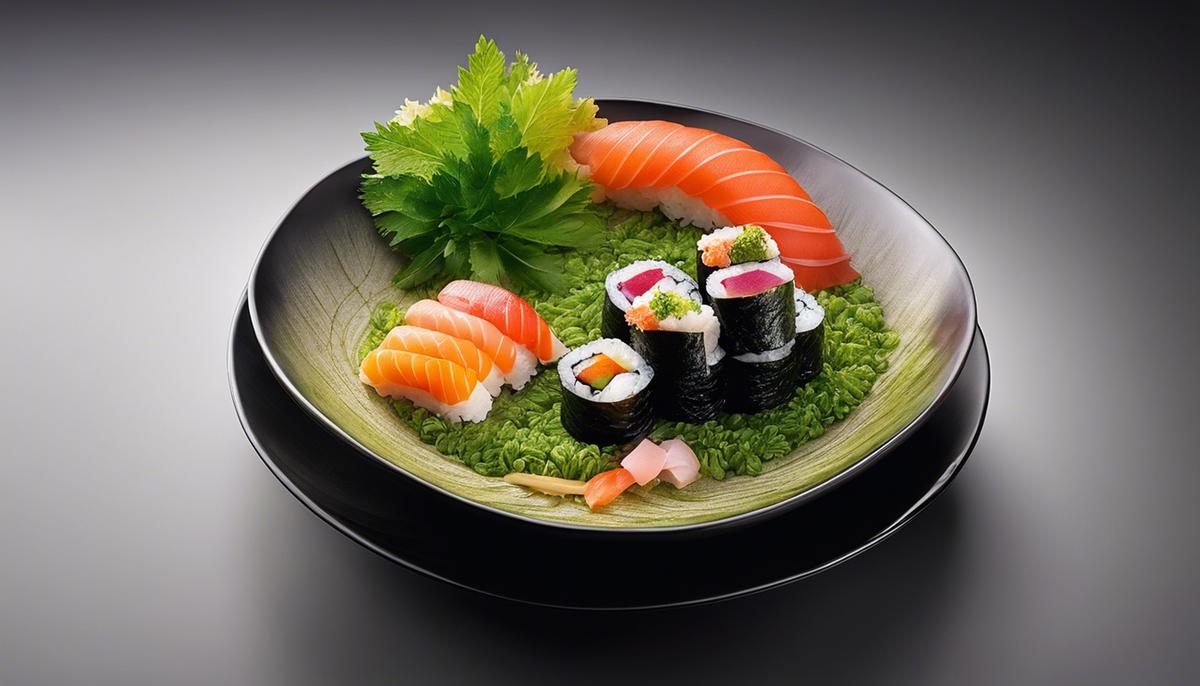
Sustainability of seaweed production and its impact on sushi culture
We continue to shed light on our focus and now turn to the aspect of the environmental compatibility of algae production. Environmental awareness has never lost its importance and it is also very popular, especially in the kitchen, where raw materials are processed. When it comes to sushi, this awareness has a direct impact on the quality and taste of the finished product.
Algae production is the focus of interest. With the increased awareness of sustainability, more and more seaweed manufacturers are turning to effective and environmentally friendly production methods. Agricultural practices that are in harmony with nature are central to maintaining the quality and sustainability of algae. The careful use of natural resources results in seaweed products that are not only noticeable in terms of taste, but also in terms of their quality.
Sustainable algae production is more than just a trend. It is essential for the continued growth and development of sushi culture. Seaweed grown and harvested responsibly contributes to an exquisite sushi experience while shaping awareness of sustainable food practices. Thus, the enjoyment of sushi becomes not only a culinary adventure, but also a conscious choice.
In addition, sustainability in algae production is an important criterion for the aesthetic presentation of sushi. Seaweed that has been sustainably grown emphasizes the natural and authentic character of the entire dish. They intensify the visual experience and add a touch of authenticity and depth to the beloved sushi.
All in all, sustainability in seaweed production has a deep and significant impact on the overall experience of sushi enjoyment. Not only does it influence taste and aesthetics, but it also shapes the deep awareness of the environment, which is of central importance in today’s society. Thus, sustainable algae production makes a significant contribution to the further development and preservation of the beloved sushi culture as we know and appreciate it.

Sushi culture is in itself a tribute to the harmony and balance between people and their natural environment. It connects to our roots and traditions and invites us not only to consume our food, but to respect, appreciate and celebrate it. As we move into the age of sustainability, a deep understanding of the role of seaweed in sushi culture will help us identify the challenges and opportunities that lie ahead. With care, dedication and respect, we can continue to cultivate the unique relationship between seaweed and sushi and use it as a source of inspiration, enjoyment and innovation.
